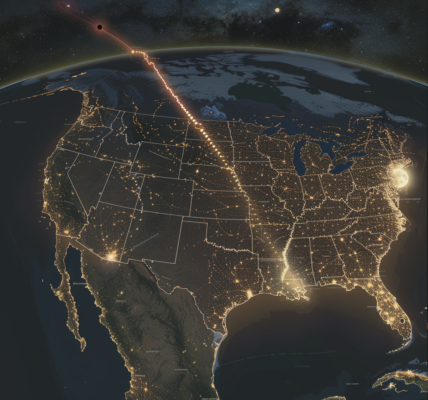America is gearing up for the upcoming total solar eclipse on April 8, 2024, and many enthusiasts are eagerly searching for the best spots to witness this celestial event within the path of totality. However, the unpredictable April weather patterns may pose a challenge for those hoping to catch a glimpse of the corona and experience a fully darkened midday sky.
The last total solar eclipse that traversed a wide path across the continental U.S. occurred on August 21, 2017, offering clear summer skies for most locations along the path of totality, from Oregon to South Carolina. Unfortunately, the weather forecast for the upcoming eclipse on April 8 suggests a less favorable outlook, with historical data indicating that the likelihood of encountering a cloud-free sky during this time of year is relatively low.
According to NASA, approximately 70% of the earth is covered in clouds at any given time, highlighting the challenge of finding unobstructed views for celestial events. Mike Augustyniak, CBS Minnesota director of meteorology, emphasized the impact of the current El Niño pattern, which typically increases the probability of cloudy and rainy weather in certain areas. Despite this, the winter and spring of 2024 have seen drier conditions in Texas Hill Country and western Texas, offering a glimmer of hope for eclipse watchers in those regions.
The path of totality, spanning about 150 miles in width and roughly 2,500 miles from the Texas border to northeastern Maine, presents limited opportunities for spectators to witness the full spectacle of the solar eclipse. As the April 8 event approaches, individuals are advised to consider potential weather challenges and plan their viewing locations carefully to maximize their chances of experiencing this rare astronomical phenomenon.





